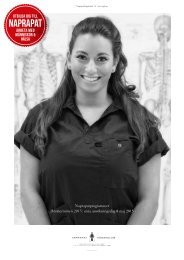Arlington School & Family
As part of their commitment to foster a college-going culture, Tarrant County College Southeast Campus and Arlington Independent School District joined together to open TCC’s new $13 million Tarrant County College Southeast/Arlington ISD Collegiate High School. TCC and AISD officials were joined by community leaders to officially open the 30,000-square-foot building with a ribbon-cutting ceremony in August 2014. The Early College High School (ECHS) includes nine classrooms, two science laboratories with a preparatory room between them and one computer laboratory. It also includes a learning resource center, a 400-seat cafeteria/ auditorium, administrative offices and 250-parking spaces. As part of the partnership, Texas Trust Credit Union donated $35,000 to help launch the new school and will provide financial education resources and workshops throughout the school year for students, parents and faculty. The ECHS has the designation of an early college high school by the Texas Education Agency. This designation is for innovative high schools located on or near a college campus that will allow students who are at risk of dropping out of school and likely would not otherwise consider attending college an opportunity to earn a high school diploma and up to 60 college credit hours. Students have access to Tarrant County College facilities, resources and services, including the faculty, libraries, labs, artistic and cultural activities and extracurricular activities, as appropriate. There is no cost to the student to attend the school. The Arlington ISD will pay for tuition, fees and required textbooks to the extent those charges are not waived by Tarrant County College. “A clear objective in our strategic plan is for our students to have leading-edge learning experiences, and opening an early college high school certainly helps us to fulfill that goal,” Arlington ISD Superintendent Marcelo Cavazos said. “A collaboration such as this with our community partner Tarrant County College is vital to our students’ success and will make a tremendous positive impact on their future.”
As part of their commitment to foster
a college-going culture, Tarrant
County College Southeast Campus and
Arlington Independent School District
joined together to open TCC’s new
$13 million Tarrant County College
Southeast/Arlington ISD Collegiate
High School.
TCC and AISD officials were joined
by community leaders to officially open
the 30,000-square-foot building with
a ribbon-cutting ceremony in August
2014. The Early College High School
(ECHS) includes nine classrooms, two
science laboratories with a preparatory
room between them and one computer
laboratory. It also includes a learning
resource center, a 400-seat cafeteria/
auditorium, administrative offices and
250-parking spaces.
As part of the partnership, Texas Trust
Credit Union donated $35,000 to help
launch the new school and will provide
financial education resources and
workshops throughout the school year
for students, parents and faculty.
The ECHS has the designation of an
early college high school by the Texas
Education Agency. This designation is
for innovative high schools located on
or near a college campus that will allow
students who are at risk of dropping out
of school and likely would not otherwise
consider attending college an opportunity
to earn a high school diploma and up to
60 college credit hours.
Students have access to Tarrant County
College facilities, resources and services,
including the faculty, libraries, labs,
artistic and cultural activities and
extracurricular activities, as appropriate.
There is no cost to the student to attend
the school. The Arlington ISD will pay
for tuition, fees and required textbooks
to the extent those charges are not
waived by Tarrant County College.
“A clear objective in our strategic plan
is for our students to have leading-edge
learning experiences, and opening an
early college high school certainly helps
us to fulfill that goal,” Arlington ISD
Superintendent Marcelo Cavazos said.
“A collaboration such as this with our
community partner Tarrant County
College is vital to our students’ success
and will make a tremendous positive
impact on their future.”
Create successful ePaper yourself
Turn your PDF publications into a flip-book with our unique Google optimized e-Paper software.
District Programs<br />
This will help them see why saving can<br />
be fun!<br />
Three Money Basics Your<br />
Kid Needs to Know<br />
by Rachel Cruze<br />
Rachel Cruze is a seasoned communicator<br />
and presenter who has been speaking to groups<br />
as large as 10,000 for more than a decade.<br />
The daughter of Dave Ramsey, she uses the<br />
knowledge and experiences from growing up<br />
in the Ramsey household to educate America’s<br />
students and young adults on the proper ways<br />
to handle money and stay out of debt.<br />
The earlier you teach your kids about<br />
money, the better off your kids will be in<br />
the long run.<br />
Believe me, I know. As Dave Ramsey’s<br />
daughter, I was blessed to be raised<br />
by parents who have a healthy view of<br />
money. My dad filed bankruptcy when<br />
I was a baby then turned his life around<br />
when he started taking a biblical view on<br />
money.<br />
For me, that meant a healthy dose of<br />
learning how to save, give and, yes, even<br />
spend. Those are the basics, and that’s all<br />
you really need to teach your kids at this<br />
point.<br />
So let’s break down these three basics.<br />
Spending: This is the easy one, right<br />
What does your 8-year-old want to do the<br />
first time he gets a $10 bill Spend it all in<br />
one place! But that’s where you come in<br />
to the picture. Teach your kids this basic<br />
principle: When it’s gone, it’s gone!<br />
That’s why I always received a<br />
commission, not an allowance, from my<br />
parents. With a commission, I got paid<br />
when I helped out around the house. An<br />
allowance is simply giving money for<br />
breathing.<br />
When you give a commission, you’re<br />
teaching your kids the connection<br />
between money and work. So when<br />
they head out to buy something with<br />
their money, they’ll think long and hard<br />
about how they spend it because they<br />
understand what it took to earn that<br />
money in the first place.<br />
This applies to kids at any age. Don’t feel<br />
like you’re a failure if your kids are in<br />
high school and you haven’t been talking<br />
to them about spending wisely.<br />
As you talk with them, remember that<br />
spending is easy, but disciplined spending<br />
takes more practice. Teach your kids how<br />
to spend money the right way.<br />
Saving: To save, you need to learn<br />
patience. With kids, you’ll benefit by<br />
giving them a saving goal to aim for. My<br />
parents told me they would match any<br />
amount I saved for a nice, used car when<br />
I turned 16. They called it the 401Dave<br />
plan because of the match. And it worked<br />
great!<br />
I was motivated to save because I knew<br />
how I would benefit, and thats a lesson<br />
that’s stuck with me the rest of my life.<br />
Even if you can’t do a matching plan,<br />
think of ways you can incentivize your<br />
kids to save at an early age.<br />
If your kid wants a toy or a video game,<br />
help them understand how saving will<br />
allow them to reach those goals faster.<br />
Giving: Giving is what all this is about.<br />
When you have a healthy view of money,<br />
you understand how important it is to<br />
give. The whole reason your kids should<br />
learn how to save and spend is so that,<br />
one day, they’ll be in a position to give,<br />
give, give.<br />
But they shouldn’t be waiting to give.<br />
Start now. When I was a kid, I saved 20%<br />
of everything I made. So if I got $20 for<br />
babysitting, I would stash away $4. I used<br />
an envelope, but your kids might find<br />
it easier to have three buckets or piggy<br />
banks dedicated to spend-ing, saving,<br />
and giving. There’s no magic number, so<br />
your kids might store away more or less<br />
for giving, but the important part is that<br />
they learn to give!<br />
And remember, more is caught than<br />
taught. So if you aren’t modeling giving<br />
in your own life, you can’t expect your<br />
kids to grow up to be unselfish givers.<br />
My parents could have sat me down and<br />
lectured me until I was blue in the face,<br />
but none of it would have mattered if<br />
they weren’t actually giving themselves<br />
to charities, to church and through acts<br />
of service in the community.<br />
One of the most important things you<br />
can teach your kids is gratitude. And<br />
givers, by nature, are grateful people.<br />
Whether your kids are 4 or 18, you still<br />
have the opportunity to make a difference<br />
in how they view money.<br />
Even if you messed up, you can still be a<br />
major influence. Just look at my parents<br />
story I mention earlier! What matters<br />
most is that you’re making an effort to<br />
do things the right way now—no matter<br />
what happened in the past.<br />
So take the time to help your kids<br />
understand the basic principles of<br />
spending, saving and giving. If your<br />
son or daughter can graduate from<br />
college know-ing these basics, you will<br />
put them in a position to win the rest of<br />
their lives! †<br />
14 <strong>Arlington</strong> <strong>School</strong> & <strong>Family</strong> - January 2015

















